The most appealing beauty of the supplement industry is its ability to innovate. While most formulas are not groundbreaking revelations, every once in awhile, we're hit with something that completely redefines the industry.
Berberine, a unique plant alkaloid that has been shown to improve the body's response to insulin -- to the point of working better than some pharmaceutical drugs -- is one such exciting compound. This alkaloid has displayed some impressive abilities, specifically in the realm of insulin sensitivity, fasting glucose levels, HbA1c reduction, and nutrient partitioning.
While berberine has been available as a supplement ingredient for quite some time, it wasn't always as impactful as one would hope, since it has poor bioavailability and there are many low-quality extracts on the market. The good news is that we are on the brink of another ingredient renaissance event thanks to NNB Nutrition, an ingredient innovation company who has released a new variant of berberine.
Dihydroberberine: The better part of berberine
NNB Nutrition has discovered a better way to maximize berberine's potential. In their patented new ingredient, GlucoVantageⓇ, the science-backed team is incorporating a superior form of the ingredient - dihydroberberine (DHB). Recent research suggests that this form of berberine is as much as six times better than its base form, which could potentially be huge for the body composition and anti-aging markets.

GlucoVantage from NNB Nutrition is a pure form of Dihydroberberine (DHB) and is known as "The Super Berberine". See more on NNBNutrition.com
Even with lower-quality extracts on the market, berberine is still effective in and of itself, and is backed by a significant amount of human research. But recent studies suggest that DHB may be what powers its insulin-optimizing abilities. If so, we will see a rise in the popularity of dihydroberberine -- and thus NNB's GlucoVantage -- very soon.
In this post, we're going to dive deep into berberine - what it is, its applications, the science behind, and the potential of its hydrogen-bonded derivative, DHB. Fair warning, though - this article is going to be very science-heavy, so make sure you've got yourself ready to jump into some complex terminology and mechanisms!
TL;DR:
- Berberine is a bioactive plant alkaloid often used for its anti-diabetic effects in supplements known as Glucose Disposal Agents (GDAs) or Nutrient Partitioners.
- When supplemented, berberine demonstrates strong improvements in fasting blood sugar, HbA1c, insulin sensitivity, and lipid profiles in both humans and animals.
- A landmark study of 1.5g/day berberine demonstrated identical effects to the pharmaceutical drug metformin in terms of HbA1c reduction, fasting blood glucose, and post-prandial blood glucose levels... and berberine bested metformin in terms of triglyceride reduction!
- Berberine suffers from two issues: poor bioavailability and low-quality extracts on the market. This has led to a new generation of supplements:
- Dihydroberberine is a derivative of berberine that is more bioavailable and can be taken at lower doses with greater results. Once absorbed, it reassembles back into berberine in the bloodstream.
-
GlucoVantage from NNB Nutrition is a pure form of Dihydroberberine (DHB) and is known as "The Super Berberine". See more on NNBNutrition.com
GlucoVantage from NNB Nutrition is a patented and trademarked form of pure dihydroberberine that is created from pure berberine and is lab-tested.
- Dosage: Standard Berberine is best dosed 3x/day at 500mg per serving, while GlucoVantage can be dosed 3x/day at 100-200mg per serving. These are best taken before meals, but can also be taken when fasting if already fat-adapted.
- Berberine's most notable side effect is GI distress, which is best solved with the lower doses of the more bioavailable GlucoVantage.
Understanding the role of insulin
Before we get into berberine, however, it's imperative that we understand the basics of insulin. As this is the primary hormone that berberine interacts with, it doesn't do us much good if we're not aware of what the hormone does prior to any supplementation!
How insulin does its job
Insulin is one of the most integral hormones secreted by the body, and is often called "the energy storage hormone". Constructed via two chains of amino acids,[1] insulin is synthesized within the pancreas prior to being released into the bloodstream.[2] The body signals its release via a complex chain of reactions, starting with an initial recognition of the amount of glucose in the body at a given point of time.
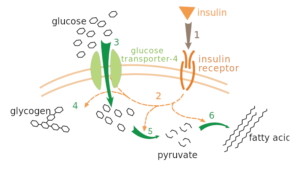
1: Insulin binds to its receptor, 2: activating various protein cascades, including translocation of GLUT4 transporter to the plasma membrane. 3: The influx of glucose. 4: The synthesis of glycogen. 5: Glycolysis. 6: Triglyceride synthesis. Image courtesy Wikimedia.
Think of the body constantly monitoring blood sugar levels, and once they rise above a certain threshold, beta cells in the pancreas release insulin in an effort to return your blood sugar to normal levels.[2]
The driver (insulin), the car (GLUT4), and the passenger (glucose)
Insulin activates the insulin receptor tyrosine kinase (IR), which then phosphorylates, making for fertile ground for chemical bonding between itself and other signaling compounds.[3] Phosphoinositide 3-kinase (PI3K) is one of these signals, acting as the primary catalyst in this second stage.[4,5] PI3K then goes to work, triggering a multitude of other compounds and proteins within the body. Thus, this kinase is extremely crucial in various processes, specifically in the signaling of mTOR and Akt, protein kinases concerned with protein synthesis and glucose uptake, respectively.[4]
The signaling of Akt successively activates GLUT4, perhaps the body's most powerful glucose transporter. GLUT4 then completes this chain of events, picking up blood sugar and carrying it into cell membranes.
Once released into the blood, insulin essentially pushes glucose out of the bloodstream and into fat and muscle cells via the transport GLUT4.[6,7] An analogy to use is that GLUT4 serves as a vehicle while insulin is its driver, telling it where to go and pick up a rider, and where to drop it off. Glucose hitches a ride and reaches the cell, effectively lowering blood sugar levels back to normal - but where it puts that glucose and how quickly make all of the difference in the world.
The effects of insulin
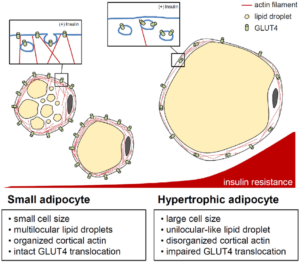
Insulin and GLUT4 work best in small fat cells.[8] It's important to be insulin sensitive, and we can best accomplish this through low-carb diet, appropriate intermittent fasting, high-intensity training, and proper supplementation.
The bulk of what makes insulin so interesting is what happens because of the process outlined above, and how it can be altered, both for better and worse. The action of insulin can happen at varied speeds: having it work too fast (which can lead to hypoglycemia) or too slow (hyperglycemia and hyperinsulinemia) can both be dangerous. Hyperglycemia, the case in which the body struggles to reduce blood sugar levels, can lead to the development of various ailments, with type 2 diabetes chief among them.
Storage into fat or muscle
The speed of its effects aren't all that's important, however. Glucose ultimately enters one of two types of cells - fat and muscle - thanks to being transported by GLUT4.[9] When it's stored, it's converted into glycogen, whose storage depends on which type of tissue it resides. If it's been moved into adipose tissue, it's used to build more fat tissue.[3] Alternatively, if the glucose has entered into muscle tissue, it helps build new muscle tissue.[3] In other words, glycogen fed to fat cells makes more fat, whereas glycogen shuttled to muscle helps build more muscle. This relationship is ultimately one of the reasons why insulin activity is so important, but it is not the only reason!
Insulin sensitivity

You can consider insulin resistance to mean "sugar saturation" - at some point, overfilled adipocytes refuse to store more energy. Waist-to-Height ratio makes for an excellent proxy to insulin resistance. Image courtesy Dr. Ted Naiman.
Putting aside how well the body produces insulin, there's another sphere in which the effects of insulin can differ. Insulin sensitivity is a term used to describe how well the body responds to insulin.
Being more insulin sensitive means that the cells cooperate extremely well, and thus need only a small amount of insulin secreted to move glucose. Being less insulin sensitive, also known as insulin resistant, is undesirable, as it means the body must produce more insulin than normal.[10]
Insulin resistance leads to hyperinsulinemia leads to disease
When insulin levels are chronically elevated due to the body's lack of response to the hormone (insulin resistance), it enters a state of hyperinsulinemia. An alarming amount of research has shown hyperinsulinemia to be the connection between diet and disease,[11] and its presence is documented with regards to obesity, diabetes, hypertension (high blood pressure), renal failure, nonalcoholic fatty liver disease, polycystic ovary syndrome (PCOS), sleep apnea, certain cancers, atherosclerosis, cardiovascular disease, and likely far more. The body's response to (and clearance of) insulin is central to disease prevention.
There are three areas in which insulin sensitivity is relevant - peripheral, hepatic, and pancreatic - but our concern in this article is ultimately with peripheral insulin sensitivity. While hepatic and pancreatic types are concerned with how well the liver and pancreas work, peripheral insulin sensitivity deals with fat and muscle cells and their ability to absorb glucose - and this is a sports nutrition blog dealing mostly with fat loss and muscle growth.
Factors that influence peripheral insulin sensitivity
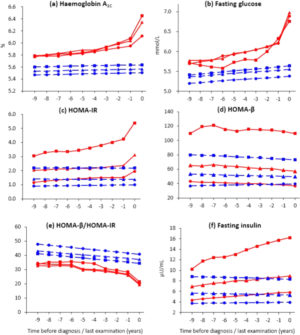
Fasting insulin levels predicts metabolic disease NINE years in advance,[12] so why do doctors so rarely check it?
While genetic predisposition likely dictates a "starting point" of sorts, insulin sensitivity can be strongly influenced by various lifestyle choices. Research has shown that exercise -- both aerobic and anaerobic -- can increase insulin sensitivity.[13,14] In particular, weight lifting (a form of anaerobic exercise) has been shown to increase muscle mass as well,[14] which makes sense - the body uses insulin to shuttle glucose to depleted muscles, where it's then used to rebuild them anew. This newfound muscle tissue now gives your body more places to put future glucose, creating a positive feedback loop!
Alternatively, there seems to be quite a few ways to reduce insulin sensitivity. Obesity,[15] poor sleep habits,[16] and high levels of stress have all been linked to insulin resistance.[17] Cortisol, the "stress hormone", plays a huge role in insulin sensitivity, and when the body produces more cortisol, it struggles to respond to insulin effectively. In all of these situations, the body is stretched past its normal limits - each circumstance puts the body in a state it's not meant to operate within, and as such, it begins to malfunction.
By simply trying to stay healthy through exercise, proper sleep, and a proper diet, one can effectively boost their insulin sensitivity. As we're sure you know, this requires prioritization and discipline -- but it is worth it. But life often gets in the way, making something like insulin sensitivity and dietary choices incredibly important. In an insulin resistant state, you can find yourself struggling to gain muscle or lose fat.... or in the long-term, if on a poor Standard American Diet (SAD), may end up with one of the many diseases above.
Luckily, there are means in which one can optimize insulin sensitivity - and one such way is supplementally.
What is berberine?
Berberine, scientifically known as 2,3-methylenedioxy-9,10-dimethoxy-protoberberine, is a bioactive alkaloid found in various plants.[18] Many of these plants, such as those from the Berberis family (berberis aristata for example), have been used in the practices of both Ayurvedic and Traditional Chinese Medicine (TCM) for centuries.[19]
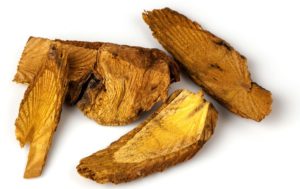
Berberis Aristata Bark is high in berberine, especially during the fall season - a great time for seasonal
"energy storage"!
These practices typically utilized the compound for its antimicrobial and antiprotozoal characteristics,[20] which modern science have actually validated: berberine has been shown to successfully defend against strains such as cholera and salmonella.[20-22]
A reactive herb with many uses
Berberine has a rather unique chemical structure, as well. The alkaloid possesses a quaternary ammonium ion, a highly attractive ion that can form various chemical bonds. Depending on the other compounds present within the body, berberine and its properties can be slightly altered to deliver different effects. Many of these interactions studied have examined berberine and its relationship with other herbs in Chinese Medicine.
For example, baicalin, a flavonoid that may possess neuroprotective capabilities,[23] has a carboxylate ion that can bond to berberine's ammonium ion. Research has shown that this baicalin-berberine complex has higher bioavailability than either of the two ingredients alone.[24] This is not only just an example of the many relationships that berberine has, but also shows one of the two major issues we need to solve with berberine - its bioavailability! (The second major issue, extract quality, is also discussed below.)
Berberine has poor absorption

How does the best glucose disposal ingredient in berberine get any better? It's known as dihydroberberine!
Aside from too many untrustworthy extracts on the market, perhaps the biggest issue with berberine is its low bioavailability. Research has tagged the compound's absorption yield at a mere 5%,[25] meaning that that body fails to fully utilize the vast majority of the alkaloid when ingested.
This poor absorption is a product of a rather unfortunate relationship with P-Glycoprotein. This protein, located within cell membranes, rejects the absorption of berberine into the cell. That's not all, however - berberine has been shown to increase P-Glycoprotein activity within the intestine,[26] essentially encouraging its own demise!
Make no mistake - this does not mean that berberine fails to deliver potential benefits. They can still be had, but only in taking relatively large doses of the alkaloid. In addition, taking a lot of it all at once has been linked to stomach issues,[27] so it's advised that one split a full dosage into multiple, smaller doses. We can -- and have -- solved these issues, but let's continue with the science.
So, once berberine does get absorbed, what exactly happens?
Metabolism and interactions
Berberine is typically broken down into four metabolites - thalifendine, jatrorrhizine, berberrubine, and demethyleneberberine.[28] While the four all interact with different enzymes and proteins, they seem to all act on the same mechanisms, albeit to a lesser degree than their parent compound.[28]
And with those, we finally get to the interactions berberine (and its metabolites) have within the body!
AMPK
Finally, we return to the some of the mechanisms that relate to insulin. Adenosine mono-phosphate kinase (AMPK) is a protein that's integral in maintaining energy balance, specifically by inducing glucose and fatty acid uptake.[29] When the cells are in need of energy replenishment, AMPK takes charge and rushes fuel to where it needs to go.
We didn't directly talk about AMPK in our discussion about insulin earlier, however, we did discuss a few kinases directly affected by it! AMPK activation stimulates PI3K and Akt activity in an interesting fashion - it upregulates insulin-stimulated Akt activity by regulating PI3K.[30] This allows it to enhance insulin sensitivity in multiple ways. Not only does it stimulate PI3K, but AMPK inhibits mTOR's impact on insulin activity, further raising insulin sensitivity![30] Given its powerful impact on insulin and its reception within the body, wouldn't it be great if there were ways to stimulate AMPK? There are:
Berberine has been shown to enhance AMPK activity in a dose/time-dependent manner.[31] How, you ask? Well, scientists are still working to uncover the totality of it, but preliminary studies suggest that it inhibits mitochondrial respiratory complex 1.[32] This effect, which increases AMPK levels, is similar to that of some pharmaceuticals used to treat diabetes. It also seems to inhibit protein tyrosine phosphatase 1B (PTP1B), which further amplifies an AMPK-induced insulin sensitivity boost.[33] This upregulation stems throughout the body as well, affecting both muscle and fat cells.
This interaction is vital to the effectiveness of supplementing with berberine, as it's ultimately what makes this compound so appealing. Now let's jump into what the research has to say about this relationship between berberine and insulin sensitivity:
The science supporting berberine
There's an extraordinary amount of research on the powers of berberine:
-
Increases adiponectin, which in turn raises insulin sensitivity
diponectin can activate AMPK and PPARα in the liver and skeletal muscle.[34] We recently explored PPARα in our articles on BAIBA and MitoBurn.
Adiponectin is a protein hormone that improves cellular responses to insulin when secreted by fat cells. It works in ways similar to what we've already discussed, stimulating AMPK activity in tissues.[34] The body produces the protein in three different forms, though its "high molecular weight" form has been deemed most relevant in terms of improving insulin response.[35]
Research has shown that berberine can increase adiponectin production through a process called adiponectin multimerization, which in turn improves insulin sensitivity.[36] This makes sense, given that both berberine and adiponectin stimulate the same system.
Can increase glucose uptake into fat if liver and muscles are full
Thus, it should come as no surprise that berberine increased glucose uptake in fat cells.[37] It should be remembered that the glucose from those carbohydrates eaten have to go somewhere, after all.
Similar to a type-II diabetic shooting insulin after a carbohydrate-laden meal, berberine can promote fat storage just as much as muscle storage in non-optimal situations, which is why we always recommend weight training and high intensity exercise if ingesting any carbohydrates.
-
All-around improved glucose response
There's good news, however. While berberine has been shown to improve insulin response within fat cells, it doesn't necessarily do so in a singular fashion. Research suggests that berberine affects multiple glucose uptake-related mechanisms:
-
It's not called a "glucose disposal agent" for nothing! Berberine improves the overall glucose disposal rate![27]
Stimulates AMPK activity to improve glucose uptake,
- Increases GLUT1 transporter activity.[38] GLUT1 is one of the least active glucose transporters in the body, yet berberine seems to call it into action!
- Inhibits PTP1B enzyme activity, effectively mimicking the actions of insulin.[37] This effect promotes overall glucose uptake, pushing glucose into both fat and muscle cells.
Though the effects of berberine are most impactful on AMPK production, the compound seems to take aim on glucose uptake in a holistic sense. It doesn't just focus on one mechanism, it turns its attention to multiple -- those that are both insulin-dependent and insulin-independent.
The encompassing nature of this effect serves as evidence that supplementing with berberine to effectively improve insulin response, specifically in individuals that struggle to manufacture insulin naturally, could be a worthy use.
-
-
Improves blood glucose uptake, particularly in Type 2 diabetics
Type 2 diabetes is in ailment in which an individual struggle to either produce enough insulin or effectively respond to it. There are pharmaceuticals typically used by these individuals to help improve both of those factors. However, given that science continuously has its eyes set on uncovering new information, researchers were intrigued by the hypoglycemic properties displayed by berberine. They wondered whether it could perform in similar ways to diabetic medicines.
Outperforming metformin
In a landmark study from 2009, 36 adults recently diagnosed with type 2 diabetes were split into two groups - one received 1.5g of berberine daily, while the other was administered metformin, a popular antidiabetic drug. After 13 weeks of treatment, multiple markers of glucose metabolism - hemoglobin, fasting blood glucose (FBG), postprandial (post-meal) blood glucose (PBG) , and blood triglyceride levels - were compared to baseline readings.
At the 13-week mark, the researchers came to some incredible findings. Not only did berberine "exhibit identical effects" as metformin on hemoglobin, FBG, and PBG levels, but it also regulated lipid metabolism to a higher degree than metformin.[39] Berberine improved markers of glucose metabolism just as well as the drug, but also lowered triglyceride and total cholesterol levels more than metformin did![39]
These findings were corroborated in similar research from 2010. In that study, scientists found similar decreases in hemoglobin and fasting blood glucose,[40] while also observing how berberine accomplished these effects. They saw elevated insulin receptor expression in peripheral blood lymphocytes, which displays the body reaching higher levels of insulin sensitivity post-supplementation.
...and we can still do better
What's really interesting about this landmark study is that it was performed with standard berberine. Discussed below, we get into a more specific metabolite of berberine (dihydroberberine) that performs even better, and we're confident that it would leave some of these pharmaceuticals in the dust!
-
Improves insulin levels and insulin sensitivity
Tangible and direct results of improved insulin sensitivity exist as well! Research from 2012 was interested in the effects of berberine in individuals with metabolic syndrome. 37 subjects were given 900mg of berberine daily for 12 weeks, with key metrics being assessed both before and after the study's conclusion. They found similar results as the two studies from the previous section - significantly lower levels of fasting blood glucose, hemoglobin, triglycerides, and cholesterol.[41] They also saw significant improvements in adiponectin activity and reductions in leptin,[41] validating the findings of previous studies.
However, these researchers also examined insulin levels directly. Using homeostasis model assessment insulin resistance index (HOMA-IR) as its measurement, they found that berberine ultimately reduced HOMA-IR by 41%.[41] Considering that HOMA-IR incorporates both fasting insulin and fasting glucose (it multiples them, then divides the product by 22.5 to form an index), the substantial reduction of this comprehensive metric is an incredibly impressive find here.
-
Enhanced glucose uptake in muscle cells
One of the keys of proper glucose uptake is being able to shuttle sugar to the cells that need it most. When discussing this in terms of body composition, that translates to improving glucose uptake in muscle cells. Not only does this prevent glucose from being stored as fat, but it also helps you recover and build muscle. Thus, something that can help increase insulin sensitivity while also encouraging uptake in muscle cells makes for quite the body recomposition agent.
Berberine, via its AMPK-stimulating effects, has been shown to increase glucose uptake in skeletal muscle cells.[37] Specifically, berberine accomplishes this by also increasing mitochondrial synthesis within muscle cells. Forming more mitochondria increases energy needs within these cells, thus being able to utilize more glucose![42]
Research has also displayed the two-pronged way berberine does this. By stimulating the insulin receptor (IR) in cells,[43] while also inhibiting PTP1B to further improve its functioning,[37] berberine creates a highly desirable environment for muscle cells to intake glucose.
Interestingly, this effect seems relevant only in specific situations. Scientists have studied glucose uptake in muscle cells with varied levels of insulin sensitivity. There seems to be a significant increase in insulin sensitivity only in insulin resistant muscle cells,[44] with research failing to find significant effects in muscle cells that are already insulin sensitive.[45]
-
What about berberine as a weight loss agent?
More incredible berberine before-and-after results, especially with body mass index on top of the usual metabolic and lipid profile improvements![41]
With all of this talk about insulin sensitivity and a more optimal blood glucose dispersion, there should be some sort of weight loss benefits, right?! Sort of.
The 2012 study that tested berberine on adults with metabolic syndrome found decreases in BMI,[41] which, as we know, is an imperfect measure of a healthy weight. However, the 2009 study on type 2 diabetics offers a bit more insight into how berberine can be used for weight management. This study, while seeing no significant differences in BMI or body weight, did see decreases in hip and waist width.[39]
This suggests that berberine can be used for body recomposition - rather than it helping you lose weight, it can help you redistribute weight. In inhibiting the fueling of fat cells while pushing glucose towards muscle cells, this essentially means it encourages more muscle growth in place of fat growth! Remember, for many people, weight is not actually the number to track - it's body composition and incredibly important metrics such as waist-to-height ratio![46]
Now, all of the above sounds great, doesn't it? Improved insulin response, more sensitive muscle cells, and potentially improved body composition are things many of us would love to have. However, the issues with berberine aren't with its effects.
The Drawbacks of [Standard] Berberine Ingredients
As we alluded to earlier, the bigger problems are finding a quality extract and the ingredient's poor bioavailability.
-
The first catch - most berberine on the market is junk
All of the research up above comes with one major caveat: it was lab-tested and verified by the researchers, who have trusted suppliers. The materials used in their studies are almost guaranteed to be better than the standard berberine you'll find on Amazon and elsewhere.
The loudest voice regarding the ongoing problems we face with berberine supply in the supplement community is Shawn Wells, a formulator who tested 40 different raw material samples in 2015 and found that 37 were underdosed, or spiked/adulterated.
How can you be sure you're getting a pure berberine? Pictured: Berberis Aristata Fruit. Image courtesy Wikimedia Commons
Getting real berberine is expensive, and too many raw material suppliers rely on the fact that rookie supplement formulators and brands do not spend the time or money to properly test it -- or simply do not know how.
The search for a pure product led Shawn to partner with an ingredient development company known as NNB Nutrition, and together, they devised a far better approach to the problem, isolating a pure form of the compound known as dihydroberberine (patented[47] and sold as GlucoVantage) that works better and at a lower dose.
-
The second catch - high doses can cause serious gastrointestinal discomfort!
Because the body yields such a small amount of a given dose of berberine, it takes a large amount (such as 1g, which was used in multiple studies cited above) to see improved insulin sensitivity. In isolation, that's not much of an issue - if it takes larger doses to get there, then just take more of the ingredient. However, that short-sighted viewpoint is immediately dispelled in this case in two ways: cost and comfort.
High doses of bulk berberine cost more
First, and perhaps most obviously, that would be expensive. Berberine isn't exactly the most abundant compound on earth, and purchasing it in supplemental form costs hard-earned cash. Large doses mean buying larger amounts, and this practice can get pricey very quickly.
High doses of bulk berberine cause more GI discomfort
Second, and more importantly, large doses of berberine have been linked to serious gastrointestinal pain. In the above 2009 study that compared berberine to metformin, 34.5% of subjects given berberine reported gastrointestinal issues within the first four weeks of the study.[39] A meta-analysis from 2012 cited a common occurrence of such discomfort in the 14 studies included in the analysis.[48] However, it is worth noting that this was the only adverse effect found in the studies testing berberine supplementation.
If only there was something that brought all of the benefits of berberine without the high doses and occasional stomach pain...
Dihydroberberine - a better berberine?
Luckily, such a compound does exist! Dihydroberberine (DHB) is a derivative of berberine, and on a chemical level, is simply berberine bonded with two hydrogen atoms. This might not sound too exciting, but the presence of these two atoms seems to do wonders! Preliminary research suggests that dihydroberberine is more bioavailable than berberine. It also may be able to deliver the benefits of berberine without the adverse gastrointestinal effects!
Better intestinal absorption = higher bioavailability!
The true appeal of DHB is its elevated bioavailability compared to berberine. How it achieves this, however, is actually pretty interesting. When ingested, berberine breaks into 17 metabolites throughout the course of its life cycle within the body.[49] One of these metabolites is DHB, a product of reduction via nitroreductases within the gut microbiota.[49] Once DHB is absorbed into intestinal tissues and dispersed throughout the blood, it oxidizes back into berberine.[49]

Simply put by the researchers: "DhBBR [Dihydroberberine] has a better intestinal absorption than BBR."[49]
This conversion from berberine to dihydroberberine and back to berberine is rather inefficient, considering that it ultimately results in less berberine than what was originally ingested, but it does work. So what if we were to take DHB directly?
Direct Dihydroberberine ingestion for the win
Research from 2015 tested whether or not orally-ingested DHB could effectively bypass this conversion, thus yielding effects similar to that of a larger berberine dose! Analyzing the intestinal absorption rate in vitro, scientists found that DHB was absorbed five times faster than berberine.[49]
In order to validate these findings, they conducted another test using another model. Because berberine needs gut bacteria in order to be effectively absorbed, these scientists tested the absorption of standard berberine in mice with low intestinal bacteria. They found that the lack of gut bacteria limited the amount of plasma berberine within mice,[49] further supporting the hypothesis that intestinal bacteria is the limiting factor in proper berberine absorption.
In completely bypassing breakdown within the gut, DHB can be fully absorbed by the intestines. It takes gut bacteria almost entirely out of the equation, which ultimately means that a lesser dose of DHB is equivalent to a larger dose of berberine.
For even more information on this, we dug deeper into these findings and the mechanism behind them in our article titled 5x More Bioavailable: Why Dihydroberberine is "The Better Berberine".
Just as potent in improving insulin sensitivity
Better bioavailability only goes so far, as the real test is whether or not DHB is as effective as berberine in regulating blood glucose levels. If the former is absorbed better but less effective than the latter, then we find ourselves in a bit of a situation. Thankfully, we don't even have to have that discourse!
Researchers from the Garvan Institute of Medical Research in Sydney, Australia provide an excellent comparison of the two compounds. Their experiment was constructed into a two-step process - first, they would examine the AMPK activation of berberine, then they would compare it to the stimulation caused by DHB. Using mice fed a high-fat diet, they formed two groups of mice - one group received 560mg/kg daily of berberine, while the other was fed 100mg/day of DHB.
Dihydroberberine: Stronger than berberine at a lower dose!
This comparison of berberine and its derivative proved notable, as DHB was significantly better than berberine in fighting both adiposity and triglyceride build-up, as well as improving insulin sensitivity.[50] The DHB group also displayed a 44% increase in insulin sensitivity compared to control.
DHB improved virtually every marker that warrants berberine supplementation, yet did so to a higher degree and at a lesser dose!
Inhibits pancreatic lipase
There seems to be another way in which DHB attenuates fat gain. Pancreatic lipase (PL) is the main enzyme that converts triglycerides into fatty acids, and is thus integral in fatty acid absorption. In fact, high activity of this enzyme is linked to excess caloric intake,[51] thus, regulating this enzyme can be a useful tool in managing obesity.
Orlistat is the most popular inhibitor that limits PL activity. However, it often brings some painful gastrointestinal side effects with it.[52] Therefore, scientists and dieters alike have continued to search for an equivalent, more safe alternative.
Research from 2013 investigated whether or not DHB could serve as such an alternative. They conducted two tests - the first was a simulation that analyzed the docking system in which berberine and DHB molecules would operate with on a molecular level, while the second test was concerned with the actual potency of each substance in inhibiting PL.
They found that both compounds bonded in a similar fashion, but berberine suffered from a molecular structure that would ultimately limit its effectiveness in practice.[53] The in vitro study that followed further supported this - while both berberine and DHB were able to inhibit PL, dihydroberberine was just as effective but at a much lower dose.[53] At equal doses, berberine wouldn't be nearly as effective as DHB. This information corroborates the "do more with less" theme we've touched an already regarding DHB.
Some cardiovascular benefits, too!
There's also a bit of research that focuses on the cardiovascular effects of dihydroberberine, too! Atherosclerosis is the build-up of fatty plaque within major arteries in the body. Without diving too deep into how one develops atherosclerosis, there are various matrix metalloproteinases (MMP) expressed by macrophage cells that make arteries more susceptible to plaque build-up.[54] Two of these are MMP-9 and extracellular matrix metalloproteinase inducer (EMMPRIN), which are frequently considered targets when looking to improve symptoms of atherosclerosis.[54]
A study from 2014 looked into how DHB affected EMMPRIN in mice, testing its effects against berberine. They found that in macrophages, dihydroberberine reduced plaque size and improved plaque stability compared to berberine,[55] while also seeing a significant reduction in EMMPRIN expression.[55] Thus, there seems to be some backing to the claim that DHB can help improve cardiovascular health, specifically in those susceptible to atherosclerosis.
Ultimately, every time we see a new dihydroberberine study, we realize that this is the form that we want to take.
Dihydroberberine Safety: Lower Doses, Improved GI
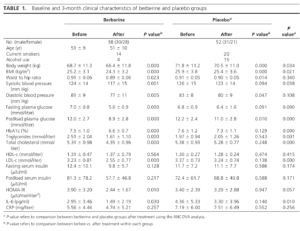
1g of berberine daily produces some fantastic results![27] But with DHB, we can do even better with less, saving you from GI discomfort!
One of the most evident advantages of dihydroberberine over berberine, other than its higher bioavailability, is the lack of stomach issues it seems to cause. Unlike berberine, DHB seems to be relatively easy on the stomach, with multiple studies citing less adverse effects in supplementing with DHB.[49,50]
However, a review of the safety of these two ingredients suggests that gastrointestinal issues may be unavoidable simply due to passing through the digestive system.[56] This same review also experimented with transdermal DHB, which yielded less discomfort, albeit with less bioavailability.[56]
This suggests that there seems to be a sort of a trade-off between the two, where perhaps the best option seems to be the compound that maximizes bioavailability while still passing through the digestive system. DHB does just that, and with multiple studies citing little to no gastrointestinal issues when supplementing with it, it just may be the best option!
Learn more with Shawn Wells on the PricePlow Podcast
Shawn Wells, chief science officer of NNB Nutrition, joined us to talk more about berberine on the PricePlow Podcast:
Audio Version
Podcast: Play in new window | Download (Duration: 1:11:56 — 73.4MB)
Subscribe to the PricePlow Podcast on Your Favorite Service (RSS)
GlucoVantage in one minute
Listen to Mike talk about GlucoVantage in this quick one-minute video explainer:
Ben's Experiment with NNB Nutrition's GlucoVantageⓇ!
Ben decided to perform an experiment to assess how GlucoVantageⓇ stacked up against his favorite glucose disposal agent products. Can a single ingredient really outperform a fully loaded formula? What the video to find out the surprising results!
Supplements with dihydroberberine
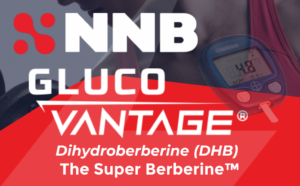
GlucoVantage from NNB Nutrition is a patented,[47] pure form of Dihydroberberine (DHB) and is known as "The Super Berberine". See more on NNBNutrition.com
While DHB certainly has some strong clinical research behind it, it actually hadn't broken into the supplement industry...until now! GlucoVantageⓇ from NNB Nutrition is the first commercially available product containing DHB. This powder is 100% DHB - lab tests and all: there's no manufacturing malpractice, no spiking, nor any other ingredients! Delivering a high-quality, all-natural DHB, GlucoVantageⓇ is truly the first of its kind!
NNB Nutrition was incredibly smart to go with dihydroberberine here as opposed to standard berberine. As research shows, DHB has a higher bioavailability that makes it an incredibly cost-effective form of berberine - you can yield great benefits with a smaller amount! This not only benefits NNB Nutrition and the brands who work with them, but consumers as well.
Using GlucoVantage, you can get more out of less, meaning that a container can take you longer to go through. Due to the lower dosing below (and less work in finding a quality berberine extract), GlucoVantageⓇ has a lower price tag on the aggregate than berberine, making it a great addition to many weight loss and glucose disposal-improving regimens!
It's worth noting that dihydroberberine is made directly from real berberine, so it's quite intensive to do it the right way - but well worth it for users who want something better.
Mike's GlucoVantage Review
A supplement that had GlucoVantage inside provided some amazing results:
The product is in reformulation, however, so check the other products listed above to get similar results.
Berberine and GlucoVantage (Dihydroberberine) Dosage
The standard berberine dose, for those who can afford it, is 500mg three times a day, preferably with meals.

The effective Dihydroberberine Dosage is 30% the dose of standard berberine, giving it far more applications and less GI discomfort!
There isn't yet a definitive clinical dosage for dihydroberberine yet, but we can deduce a suggested range from the studies that exist. Most studies used a dosage around 20mg per kg of bodyweight per day, which was substantially less than most berberine dosages. A daily dose depends drastically on your weight, which makes a range of dosages a fitting estimate. Thus, the suggested daily dose of DHB seems to be somewhere between 200mg to 600mg.
Sure enough, GlucoVantageⓇ is recommended within that range! NNB Nutrition suggests that a serving is between 100mg to 200mg, with one to three servings per day. Splitting up servings in this fashion is an excellent way to keep DHB in your system, especially when taken before each major meal!
Lower doses: opening the doors to new applications
Compare to 500mg of standard berberine: once the excipients are added, this takes up an entire large full-sized (0/00) capsule, while the DHB could be in a gum, transdermal (at 30x better absorption than standard berberine!), super small capsule, sublingual, etc.
Stacking with DHB
There are two different stances, other than general insulin sensitivity improvement, where DHB seems to be most applicable:
Fat loss
When trying to lose body fat, there are a multitude of things one needs to ensure are in check before introducing supplements - diet, training frequency/intensity, stress levels, and sleep are just a few! However, once you have these things accounted for, there are various products and ingredients that can help you aid you as you progress towards your goals:
- Any of your common weight-loss formula ingredients, such as caffeine, L-carnitine, synephrine, yohimbine, ashwagandha, and grains of paradise are some of our favorites!
- Supplement formulators will likely pair GlucoVantage with other glucose disposal agents. Some popular ones are Na-R-ALA (Alpha Lipoic Acid), Banaba Leaf Extract, Nutrition 21's Chromax Chromium Picolinate, Gymnema Sylvestre, and several others.
-
NNB Nutrition has finally brought us a trusted and tested form of L-BAIBA, which we call an "exercise signal" that kickstarts incredible metabolic processes!
Medium-chain triglyceride (MCT) supplementation is another great option, as well, especially on low-carb diets. MCTs are an excellent source of fat for efficient fuel and appetite control, keeping you on your game despite a lower caloric intake. NNB Nutrition has you covered here, too, with C8VantageTM, their high-quality MCT powder!
- Somewhat new to the block, MitoBurnTM from NNB Nutrition (L-BAIBA) is one of the more exciting entrants into the fat-burning market these days. For more on this metabolic-boosting ingredient, be sure to check out our latest post about it!
GlucoVantage fits in right at home with any of these ingredients. Improving insulin sensitivity makes it easier to fuel muscles instead of body fat, which can go a long way in losing fat. When dieting, you want to maintain as much of your hard-earned muscle as possible, and shuttling glucose to it helps prevent it from breaking down. Add GlucoVantage to your diet supplement stack and you now have an effective way to do just that!
Clean bulking
Bulking seems to have a dirty connotation these days, thanks to countless "bro-experts" who preach that bulking is synonymous with crushing endless junk food calories daily (let's not ignore the fact that many of them are already artificially "insulin sensitive" due to other hormones they inject themselves with). For us mere mortals, however, this is not how proper bulking should be done - eating in a slight caloric surplus is a much better way to put on some muscle while minimizing fat gain.

Every time you eat carbohydrates, you stop burning fat! So why are you wasting time? BURN FAT, NOT SUGAR! Image courtesy @TedNaiman
Some of our favorite ingredients to help put on lean mass are whey protein, creatine, betaine, and plenty of nutrient-dense food like red meat and even organ meat! Carb sources should come from those that you can best digest without gas or bloating - we prefer white rice and yams / sweet potatoes. Depending on your preferences, looking into pre-workouts as a way to raise in-the-gym intensity is a great option, too!
Again, DHB slides in seamlessly - especially with those carbs and before training. When bulking, you should want as much of what you're eating to be put to good use, which in this case, happens to be rebuilding, recovering, and growing from training. By using GlucoVantage in a glucose disposal agent (GDA), you can better prepare the body for an uptick in calories, especially when eating a meal high in carbohydrates. This a relatively common (and often recommended!) use for GDAs, but we've just laid out all that may separate DHB from the rest!
Dihydroberberine acts a transporter, moving nutrients to the muscles that need them in order to help promote gains!
Conclusion: Berberine (and its more effective derivative) blow up the GDA market!
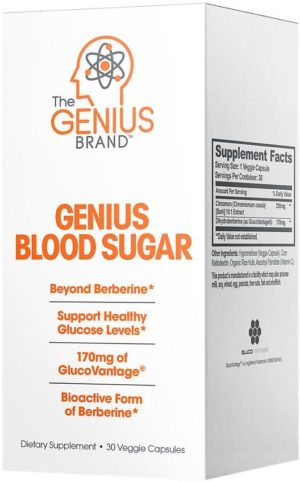
How does one avoid the berberine bioavailability problem? WIth dihydroberberine, as The Genius Brand figured out!
One of the biggest issues that presents itself in all health-related situations is insulin resistance. Being in this state chronically is very bad for your health, and can ultimately lead to more serious issues.[11] If on a poor Standard American Diet full of processed food and toxic seed oils, or your training falls off, problems such as type 2 diabetes can become a reality. In order to prevent these issues, one can help their body keep its efficient functioning earlier down the line. In doing so, they can keep nutrients going where they should be, ultimately keeping their fat-loss or muscle-building goals in sight!
To do so, we often turn to glucose disposal agents (GDAs). GDAs help insulin to better shuttle glucose from the blood to muscles, keeping the body from storing the sugar as fat. Berberine seems to be an effective way of doing this, with its derivative dihydroberberine (DHB) showing to be even more potent.
The days of low-bioavailability, high-discomfort, untrustworthy berberine extracts are over. NNB Nutrition has finally released the first commercially available dihydroberberine product, GlucoVantageⓇ. Made from 100% DHB, this ingredient can be effectively used to keep your insulin sensitivity in check and bash through muscle gain and fat loss barriers.
It can potentially make you more responsive to insulin levels, which helps the body properly process and store blood glucose the way you want it to be stored. If you're looking for a bit of extra help in maintaining muscle while trying to drop body fat, or need an extra boost on you're lean bulk, make sure you consider introducing GlucoVantage into your supplement arsenal!

GlucoVantage from NNB Nutrition is a pure form of Dihydroberberine (DHB) and is known as "The Super Berberine". See more on NNBNutrition.com
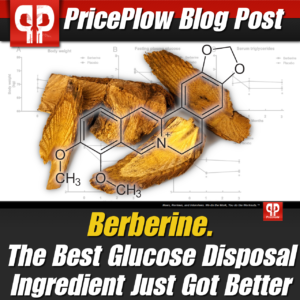
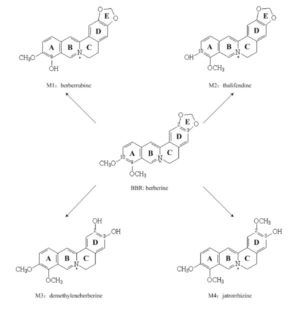
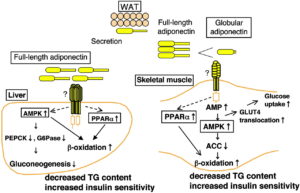

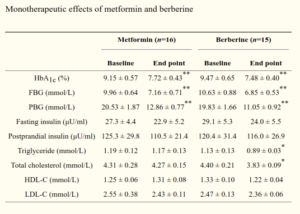
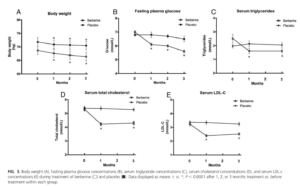
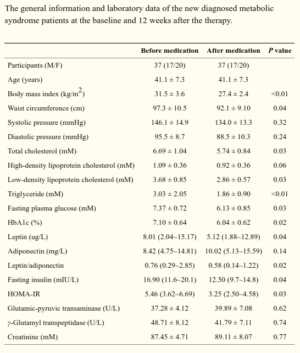
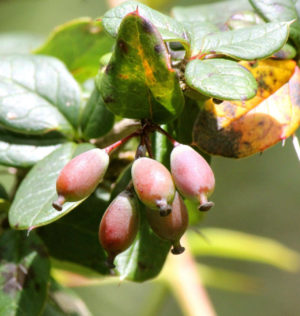
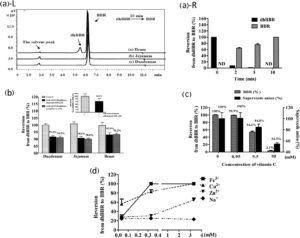







Comments and Discussion (Powered by the PricePlow Forum)